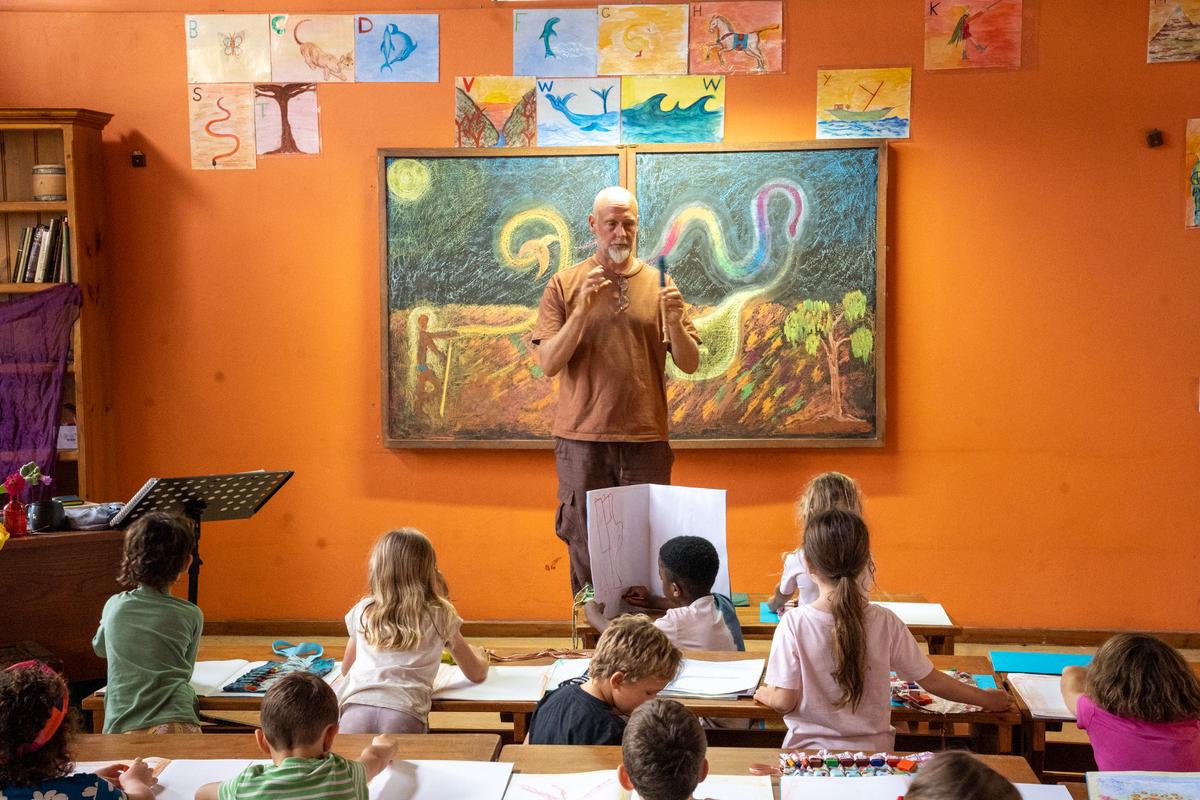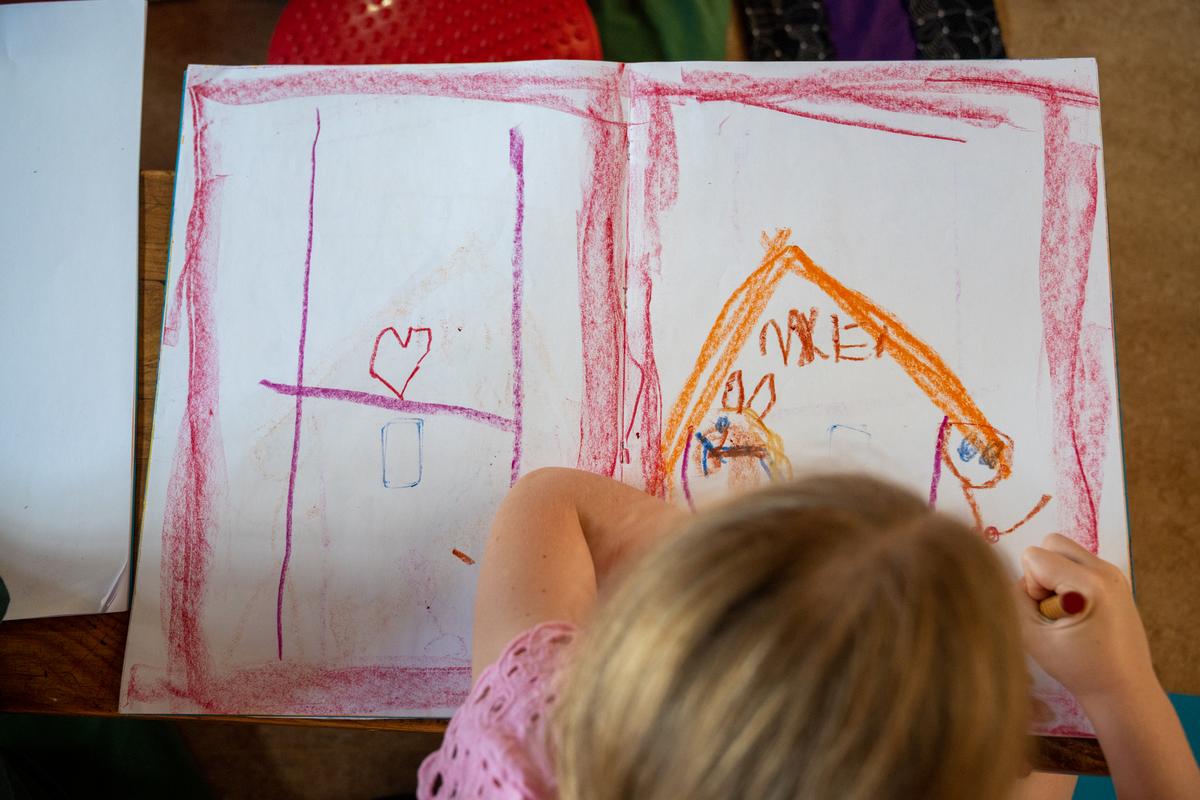Class 1 News
ANDREAS KUEPPER

Class 1 News
ANDREAS KUEPPER
Class 1 has begun their “Letters” main lesson. In this Main Lesson they are introduced to the alphabet. In Steiner (Waldorf) Schools academic and memory work begin for the students at approximately the time of their adult teeth beginning to come through or about the age of 7, with good reason.
Prior to arriving at the primary school the early childhood (EC) teachers work with a play based curriculum. It is at this time that the children’s bodies, physical, mental, emotional, and spiritual are prepared for the introduction of academic work. They explore their emotional and physical world in what appears to an adult as play but in reality is work.
During this time their imagination develops, they become creative problem solvers, form relationships with each other, and experience their world under the caring and watchful eye of their teachers, who hold them with a strong daily rhythm. This work in the EC curriculum lays the foundation for the child’s entry into Primary School.
On entry to Primary School this foundation is built upon, and the children continue to work with a strong rhythm, however, now more conscious memory work begins. Bringing their fertile imaginations with them the children learn about the alphabet, not as abstract symbols but as living entities. Each letter is taught one day at a time usually with an accompanying story for each letter.










The images of the story live and work in the child’s imagination and are then brought back from memory the following day where the letter is drawn with an appropriate picture in such a way that the letter is the image. For example, “W” for wave or “M” for mountain. The “W” can be seen within the image itself, and then the letter is practiced and drawn by the students. Poetry and speech exercises are practiced often with movements in morning circle to assist with learning the “sounds” of the letters.
The upper-case letters are taught first, with lower case being brought in later in the year. In this way, the students can, as they work with these imaginative pictures, bring the alphabet to life. Each letter has meaning even in its own right so that when the time for writing words with these letters comes language does indeed become something quite wonderful.
It is important to understand that when the stories are told, they are not brought simply for the amusement and entertainment of the class. Each story contains a message rich in content and is food for the soul. By the time the students reach primary school they have been well prepared in the EC Curriculum to be receptive to the very important story time, often held at the end of the main lesson period. In class 1 the stories continue each day. The difference in class 1 is that the children are asked to recall the story from the previous day. Sometimes discussions are held with the class as they recall not only a sequence of events but the more hidden messages of the story, although this is not as common at this age.
Andreas